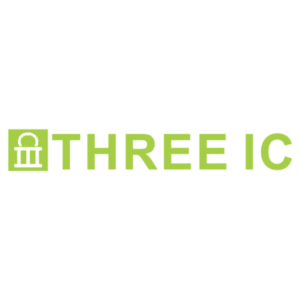

The labyrinth of cybersecurity is filled with countless acronyms and terms, two of which are SIEM and SOC.
Their importance and role in maintaining robust cybersecurity cannot be overstated.
This article provides a comprehensive overview of these two concepts, shedding light on their unique roles, benefits, and the interplay between them when analyzing SIEM vs SOC.
SIEM, standing for Security Information and Event Management, is a solution that consolidates security data from across an organization’s IT infrastructure. It collects, analyzes, and correlates this data to provide a consolidated view of an organization’s security posture, facilitating timely threat detection and responses.
But a SIEM solution is not just about threat detection. It offers valuable insights into an organization’s network activity, assists in meeting regulatory compliance, and provides tools for incident response and forensics. Information such as log data, network flow data, threat intelligence data, vulnerability data, and more are collected by a SIEM, providing a comprehensive view of an organization’s security landscape.
A SOC, or Security Operations Center, is essentially a team of cybersecurity professionals dedicated to monitoring, analyzing, and responding to security incidents. This team employs various tools and procedures, including a SIEM solution, to ensure ongoing protection against cybersecurity threats.
The SOC performs real-time analysis of security alerts within an organization’s IT environment. It monitors network activities around the clock, manages cybersecurity devices, and takes immediate action in response to security incidents. In essence, the SOC represents the human element in cybersecurity operations, providing an agile and adaptive response to complex and evolving threats.
In today’s dynamic cybersecurity landscape, organizations are increasingly turning to SOC as a Service to bolster their security defenses. The integration of SOC as a Service enhances the capabilities of the traditional SOC, enabling organizations to achieve a robust and cost-effective cybersecurity strategy with agile and adaptive response mechanisms.
Despite their symbiotic relationship, SIEM and SOC are distinct entities within an organization’s cybersecurity framework. A SIEM solution is focused on collecting, correlating, and analyzing data from various sources to identify potential threats. Conversely, a SOC utilizes this data, among other information, to monitor and respond to security incidents.
While a SIEM is a tool or a set of tools, a SOC is a team. The SIEM provides the SOC with the crucial data and analyses needed to make informed decisions about the security posture of an organization.
Determining whether to adopt a SIEM, create a SOC, or integrate both depends on various factors, including your organization’s size, industry, compliance requirements, and risk tolerance. Large organizations might have the resources to maintain fully operational SOCs with SIEM solutions. However, smaller businesses can also access these capabilities through outsourcing, like managed SIEM services or SOC as a service.
Identifying the appropriate SIEM or SOC solution involves understanding your specific security requirements, the types of your log sources, your scalability needs, and of course, your budget. Whether you choose to implement one or the other, or a combination of both, engaging with reliable service providers like THREE IC can make the process significantly easier and more efficient.
Understanding the nuances between SIEM and SOC is critical in navigating the complex cybersecurity environment. While SIEM provides a comprehensive solution for gathering and analyzing security data, SOC orchestrates an organized response to identified threats.
However, navigating these solutions and selecting the right approach can be a daunting task. That’s where a partner like THREE IC comes into the picture. With expertise in offering robust solutions such as the Sangfor firewall, and with a wealth of experience in deploying security strategies, THREE IC can help businesses of all sizes bolster their cybersecurity posture.
For organizations in Hong Kong, exploring security as a service is an excellent way to access expert-led, comprehensive, and cost-effective cybersecurity. Moreover, the option of SOC as a service provides an opportunity to have a dedicated security team without the overhead of establishing an in-house SOC.
In summary, while SIEM and SOC both play crucial roles in cybersecurity, the choice between them depends on the specific needs and resources of each organization. Understanding these differences, and leveraging the expertise of partners like THREE IC, can significantly enhance a business’s security posture, enabling it to thrive in today’s digital landscape. We invite you to get in touch and learn more from our security experts today.
A SIEM solution centralizes security data from diverse sources within an organization. By correlating this data and presenting it in a comprehensible manner, SIEMs facilitate faster threat detection and response, aiding in the efficient operation of cybersecurity initiatives.
As a team of dedicated security professionals, a SOC is vital in an organization's cybersecurity strategy. It enables real-time monitoring and response to security incidents, ensuring a proactive defense against threats and mitigating potential damage.
When considering SIEM or SOC, organizations must evaluate their specific security needs, the scale of their operations, available resources, and regulatory compliance requirements. A comprehensive understanding of these factors will guide the decision-making process, ensuring a fit-for-purpose cybersecurity strategy.
SIEM solutions are designed to gather data from various cybersecurity tools such as intrusion detection systems, antivirus software, and firewalls. This integration enables a unified view of an organization's security landscape, facilitating better threat detection and response.
A SIEM solution enhances a SOC's capability by consolidating security data from various sources and providing in-depth analysis. This allows the SOC to have a comprehensive understanding of the security landscape and respond to threats more effectively.
Outsourcing to an experienced service provider like THREE IC can help an organization access expert resources and technology without the cost and complexity of managing them in-house. This includes sophisticated solutions like the Sangfor firewall and services like SOC as a service, which can enhance a company's cybersecurity measures.
The decision should be based on the organization's specific needs, resources, and risk profile. Factors such as the nature of the organization's data, the scale of its network, its regulatory obligations, and its budget should be considered. Engaging with a knowledgeable partner like THREE IC can provide valuable guidance in making this decision.
A SOC uses a SIEM solution to collect and correlate data from various security sources, creating a centralized view of security events. This information aids in detecting threats, managing incidents, and formulating security policies. It allows the SOC to effectively monitor the organization's digital environment around the clock and respond promptly and accurately to any identified threats.

THREE IC, a prominent provider of Cyber Security and IT solutions, produces the majority of the blog posts featured here. These articles are authored by a team of professionals employed at THREE IC, including content writers and marketing experts. They are dedicated to creating informative content on a wide range of subjects that are relevant to our readers.
Our team ensures that the published articles are accurate and beneficial for our clients and partners, helping them stay informed about the latest trends in Cyber Security and IT and understand how these advancements can benefit their organizations.

address
address
TEL
+65 XXXX XXXX
info@threeic.com
address
Singapore Address here
address